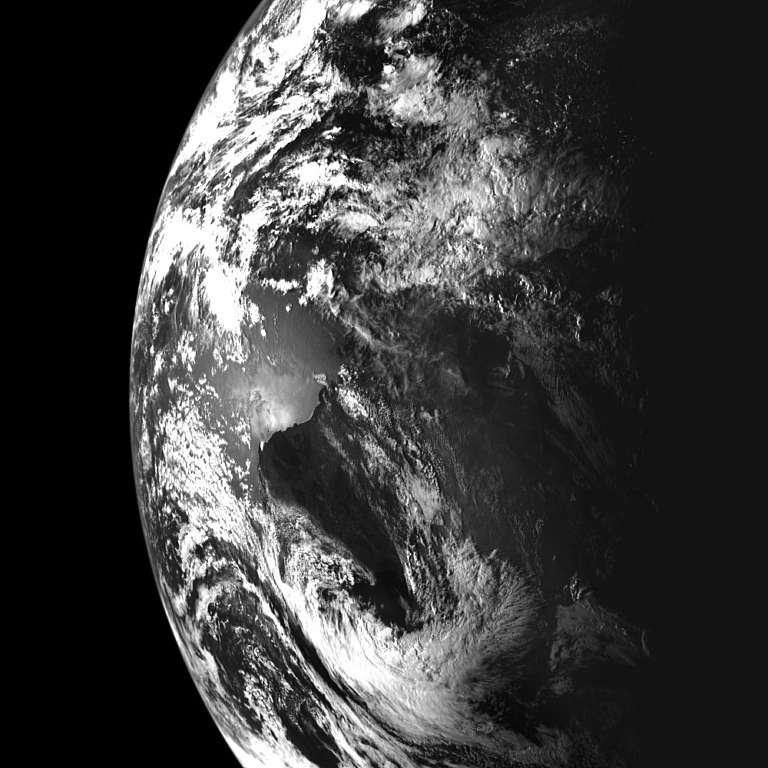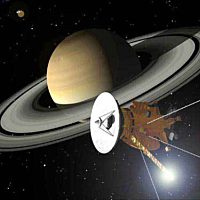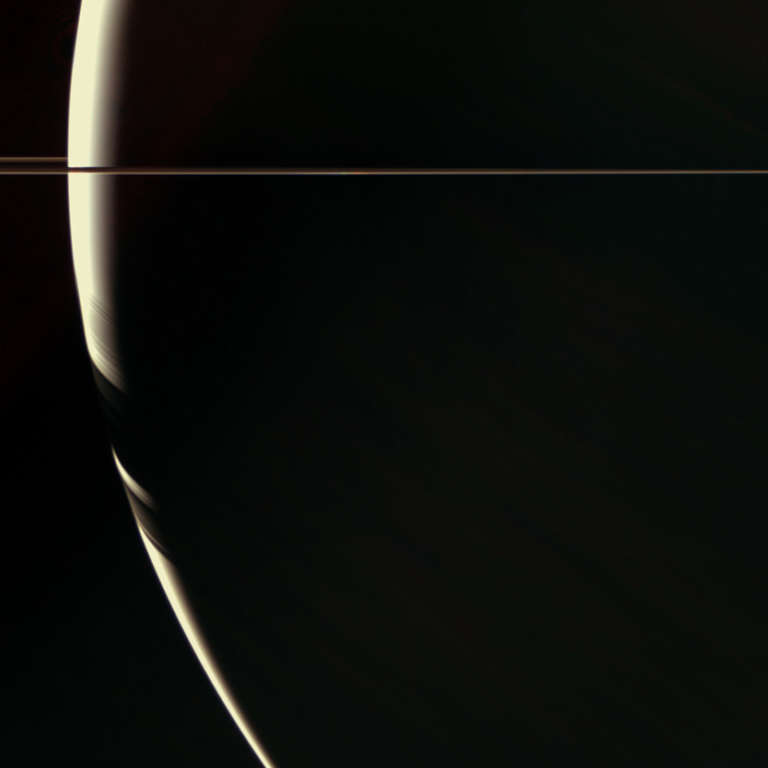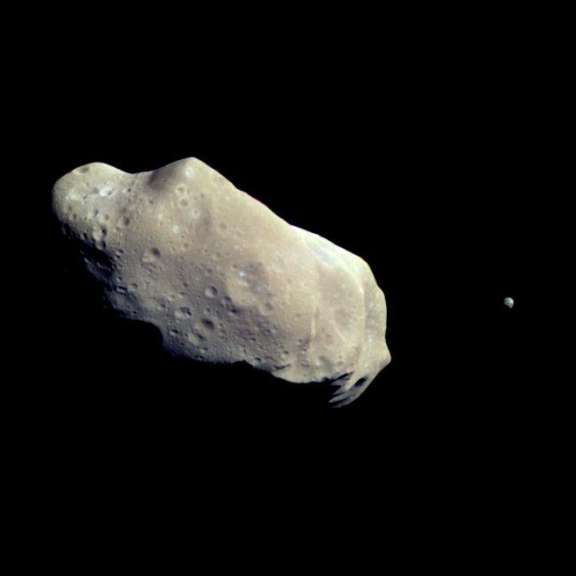All
All
Stories, updates, insights, and original analysis from The Planetary Society.
Chang'E 2 to depart for L2 on June 16
According to a story posted on xinmin.xn and run through Google Translate, there's now been an official announcement from China about Chang'e 2's extended mission: it will depart lunar orbit in mid-June and journey to L2.
It's opposite day at the Curiosity landing site selection meeting
I've been attending the final Mars Science Laboratory Landing Site Community Workshop meeting this week, taking copious notes for a future article in The Planetary Report, some of which I'll post here when I get a chance. But I just had to write a brief post about the totally crazy role reversal that is going on at this meeting.
Bj�rn J�nsson's Voyager 1 Jupiter animation, new and improved
Late last year I posted an amazing video of Jupiter's moving clouds, an animation made from images that Voyager 1 took as it approached. Below is a new and improved version of that animation. The first one was based on 16 Voyager color photos; this one covers a much longer period of time, and includes 58 images.
SETI@home Following Up on Kepler Discoveries
Remember SETI@home? The ground-breaking computing project is now taking a look at candidate Earth-like planets that have been detected by NASA's Kepler space telescope.
Citizen Science projects for Planetary Science: Get Involved! Do Science!
Citizen Science projects let volunteers easily contribute to active science programs. They're useful when there is so much data it overwhelms computing algorithms (if they exist) or the scientific research team attempting to process it.
Land ho!
It's hard to convey just how excited I am to see Dawn's first image of asteroid Vesta.
Dawn's Vesta phase timeline, a summary
Now that Dawn has finally begun its science mission at Vesta, I thought it'd be useful to go back through Marc Rayman's Dawn Journals to collect a summary of the plans for Vesta.
Dawn Journal: On the threshold of a new world
Dawn is on the threshold of a new world. After more than three and a half years of interplanetary travel covering in excess of 2.6 billion kilometers (1.6 billion miles), we are closing in on our first destination. Dawn is starting its approach to Vesta.
The scale of our solar system
Space.com has taken advantage of the infinitely scrollable nature of Web pages to produce a really cool infographic on the scales of orbital distances in the solar system.
Mars Exploration Rovers Update: Spirit Recovery Attempt Continues, Opportunity Sprints to Endeavour
As Opportunity drove her little robot heart out, breaking the 28-kilometer mark on her odometer, and driving the longest backward drive ever, April proved to be another month of exhilarating highs for the Mars Exploration Rover mission and one extended low with only silence from Spirit, despite intensified efforts by her Earth crew to establish contact.
Watch Saturn's storms spin with VIMS
A lot of attention has been paid recently to a storm in Saturn's northern hemisphere that is large and bright enough to be visible from Earth, but Saturn's atmosphere actually features lots more swirling storms. They can be hard to see, at least in visible wavelengths.
Place names on Lutetia
Whenever we explore someplace new -- a new island, a new continent, a new cave, a new world -- there's a necessary activity that explorers must perform before they can sensibly tell the world about their discoveries: name things.
India's launch site as seen by Japan's Daichi orbiter, now lost
I wrote the following blog entry about an image from Japan's Daichi Earth-observing orbiter last week as one to keep in my back pocket for a day when I was too busy to write, not anticipating that there'd soon be a more pressing reason to write about Daichi. On April 21, after just over five years of orbital operations, Daichi unexpectedly fell silent, and is probably lost forever.
Historical PDF: "The Voyager Flights to Jupiter and Saturn"
A while ago I posted all 99 issues of the Voyager Mission Status Bulletins in PDF format, and now I have another cool item to add to that collection: NASA EP-191,
Outside scientists being invited in to Cassini mission
NASA announced last week the start of a Participating Scientist program for Cassini, which is big news, for outer planets scientists anyway. Lots and lots of other missions have participating scientist programs, from big missions like Mars Science Laboratory to little ones like Dawn; but this is the first time for Cassini, which is kind of surprising given that it's been almost seven years since it arrived at Saturn.
Nearly behind Saturn
Some recent photos that Cassini took from a position nearly in Saturn's shadow caught my eye, and I made a quick color composite. What an amazing view this would be if you were riding on the spacecraft!
Mercury's Weird Terrain
When Mariner 10 flew past Mercury, it caught an immense impact basin lying half in and half out of sunlight, which they named Caloris. Even with only half the basin visible, scientists knew it was one of the largest in the solar system. Geologists had to wait more than 25 years to see the rest of Caloris, and when they did it turned out to be even bigger than they had thought. But the fact that Caloris was only half in sunlight was fortuitous in one sense, because it meant that the spot on Mercury that was exactly opposite the area of the Caloris impact was also partially in sunlight. That spot looks weird.
Lovely crater turns up in MoonZoo; 2 million images classified, lots more Moon left
Here's a very pretty picture to start off the week: a really gorgeous fresh crater on the lunar farside. There's nothing particularly unusual about this crater; it's just recent and fresh so there's a mesmerizing amount of detail in the feathery patterns of the ejecta that fans outward from it.
So far, no moons found at Ceres or Vesta
Since the Galileo mission discovered tiny Dactyl circling Ida in 1993, quite a lot of asteroid systems have been found to be binary; there are even a few triples. So it's quite reasonable to guess that two of the biggest asteroids, Ceres and Vesta, might also have satellites.
Comparing Clementine and Chandrayaan-1 spectra from the Moon
In a paper recently published in the Journal of Geophysical Research, Georgiana Kramer and several coauthors performed a careful comparison of two data sets that seem like they're measuring the same things, so you'd think that the measurements they took would match between the two instruments. But they don't quite match.


 Explore Worlds
Explore Worlds Find Life
Find Life Defend Earth
Defend Earth


 Sun
Sun Mercury
Mercury Venus
Venus Earth
Earth Mars
Mars Jupiter
Jupiter Saturn
Saturn Uranus
Uranus Neptune
Neptune Small Bodies
Small Bodies















